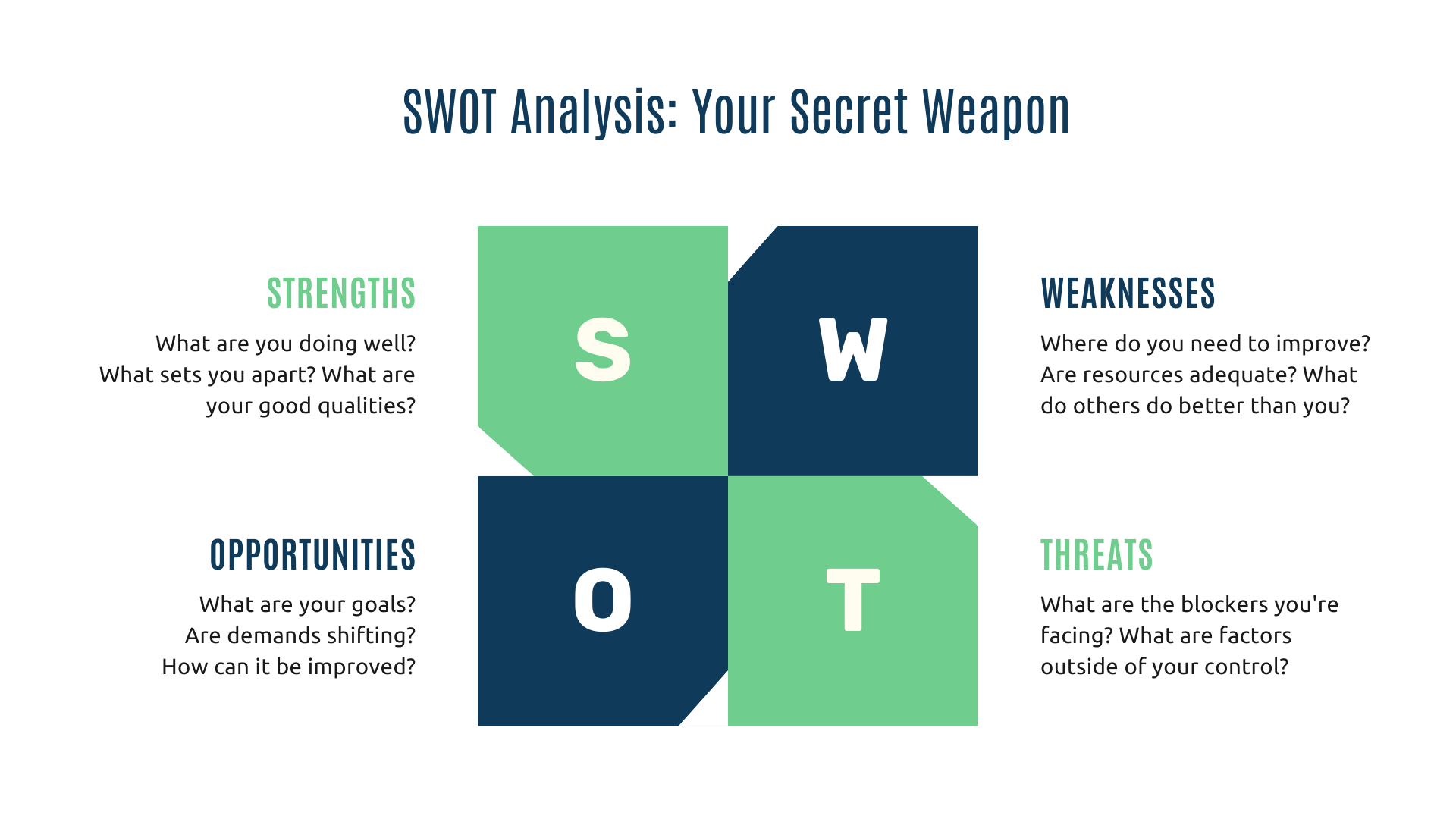
HYM’s Essential Guide to Market Analysis Marketing
Reading Time: 7 minutesWelcome to HYM’s Essential Guide to Market Analysis Marketing, perfect for helping you navigate through the bustling marketplace. We’ll equip you with the skills to explore the depths of market trends, customer behaviors, and those sneaky competitors who always seem one step ahead.
Ready to turn “market confusion” into “market confidence”? Let’s discover how mastering market analysis can be your golden ticket to marketing success.
What Is Market Analysis in Marketing?

Market analysis is a comprehensive process that helps businesses understand their industry’s landscape and where they fit within it. It involves conducting a thorough examination of the market’s size, scope, trends, and the competitive landscape.
Think of market analysis as the backbone of your marketing efforts, offering crucial insights into your target market and the broader environment in which you operate.
It involves market research to collect data on potential customers and market size. This step is vital to gauge the scope of opportunities available for your business idea.
Target market analysis helps identify and understand the specific group of customers most likely to engage with your product or service. This analysis helps in tailoring your marketing strategies to meet the needs and preferences of your audience.
Another crucial element is competitive analysis. This involves studying your competitors, understanding their strategies, strengths, weaknesses, and how they meet customer needs.
Market analysis also delves into industry trends, allowing businesses to stay ahead of changes and innovations that could impact their market segment. This foresight is crucial for long-term planning and sustainability.
It’s not just a section of a business plan; it’s a continuous process that informs all aspects of marketing strategy. It helps in understanding market saturation, identifying new opportunities, and making informed decisions.
Why Market Analysis Is Crucial for Your Business
Conducting a market analysis is crucial for the success and growth of any business, regardless of its size or industry.
Comprehensive market analysis provides deep insights into who your potential customers are, what they need, and how they make purchasing decisions.
From product development to pricing strategies, understanding the market ensures that decisions are not based on guesswork but on solid, actionable information.
By analyzing market trends and the competitive landscape, businesses can spot unmet needs in the market. This leads to innovation and the development of unique value propositions that set your business apart.
Knowledge about market size, trends, and saturation helps businesses to assess risks accurately.
With a clear understanding of the market and your target audience, you can create more focused and effective marketing campaigns. This not only improves ROI but also ensures that your marketing efforts are not wasted on uninterested audiences.
Regular market analysis keeps you abreast of industry trends and shifts in consumer behavior. This foresight is essential for long-term planning and adapting to changes in the market.
Decoding Market Size and Scope
Market size refers to the total volume or value of a particular market. But here’s the fun part: understanding market size isn’t just about big numbers; it’s about understanding their potential.
Scope, on the other hand, is about breadth. It’s looking beyond size and asking, “What kinds of opportunities does this market offer?” Imagine you’re at a buffet. The size tells you how much food there is, but the scope tells you about the variety – are we chicken schnitzel or roast beef?
How to Accurately Estimate Market Size

Now, let’s get into the nitty-gritty of how to accurately estimate market size.
- Start with Secondary Research: Dive into existing reports, industry publications, and market research.
- Conduct Surveys and Interviews: Talk to potential customers.
- Use the Bottom-Up Approach: Start small. Look at a segment of your target market, estimate sales, and then scale up.
- Top-Down Analysis: This is the opposite. Start with big industry numbers and then narrow down to your specific segment. Think of it as starting from a satellite image and then zooming in on your street.
Keeping Up with Evolving Market Trends
Trends come and go faster than the latest TikTok dance.
Social media isn’t just for memes and cat videos. It’s a goldmine for understanding what’s trending. Platforms like Twitter, Instagram, and LinkedIn can give you real-time insights into what your target audience is buzzing about.
Have you ever thought of your customers as trend forecasters? Regular feedback sessions, surveys, and reviews can tell you what’s hot and what’s not in their world.
Remember, keeping up with market trends is not about chasing every shiny new thing. Focus on the trends that align with your brand and how to adapt them to your strategy.
Predicting Future Trends: Tools and Techniques
The goal here is to not just react to trends but to anticipate them, giving you a head start in the race.
We’re in the era of big data, where predictive analytics tools and AI algorithms can analyze patterns and predict future trends.
Predicting future trends requires a mix of art and science, intuition and data.
Deep Dive into Customer Analysis
Customer analysis relies on you unraveling the complex web of your customers’ desires, needs, and habits. The aim is to understand them on a level that even they might not be aware of.
Start by collecting as much information as possible about your customers. This includes demographics, purchasing habits, social media behavior, and more.
Divide your customer base into segments based on shared characteristics. Understanding how and why your customers make purchases can reveal a lot about their preferences and decision-making processes.
Regularly ask for feedback. This direct line of communication can provide invaluable insights into what your customers think and feel about your brand.
Profiling Your Ideal Customer
Now, let’s get creative and build a profile of your ideal customer.
Start with the basics, like age, gender, location, and income level. Dive into their lifestyle, interests, values, and attitudes. Are they adventurous risk-takers or safety-seeking comfort lovers?
What problems do they face that your product or service can solve? Understanding their challenges is like knowing the plot twists in their story.
What are they striving for in their personal or professional lives? Aligning your brand with their aspirations can create a powerful connection.
Understanding Consumer Behavior and Preferences
Finally, let’s dive into the fascinating world of consumer behavior and preferences. Why do people buy what they buy? What makes them choose one brand over another?
Look at the actions your consumers take – what they buy, when they buy, and how often.
Emotions play a huge role in purchasing decisions. Identify what emotional needs your product or service fulfills. Is it comfort, security, status, or something else?
Stay attuned to broader cultural trends that might influence consumer preferences.
Use stories to connect with consumers. People are drawn to narratives that resonate with their own experiences and aspirations.
Understanding consumer behavior and preferences is like being a part of an ongoing, dynamic conversation. It’s a fascinating exploration of the human psyche and how it interacts with the world of commerce. By mastering this, you can tailor your marketing strategies to resonate deeply with your customers, creating lasting relationships and brand loyalty.
SWOT Analysis: Your Secret Weapon

Imagine having a secret weapon in your business arsenal that helps you see not only where you shine but also where you might stumble. That’s SWOT Analysis for you – a strategic tool that stands for Strengths, Weaknesses, Opportunities, and Threats.
- Strengths: These are what you do best. Maybe it’s your unbeatable customer service, your innovative product features, or your rock-solid brand reputation. It’s like knowing your superpowers in a world of competition.
- Weaknesses: These are the areas where you might need a bit of a boost. It could be things like limited resources, lack of online presence, or gaps in your product line. It’s about identifying your kryptonite so you can work on it.
- Opportunities: These are external factors that you can capitalize on. Maybe there’s a market trend leaning in your favor, or perhaps a competitor has left a gap in the market just waiting for you to fill.
- Threats: These are external challenges you might face. It could be anything from new competitors entering the market to changes in customer behavior or regulatory landscapes.
Conducting an Effective SWOT Analysis
So, how do you conduct a SWOT Analysis that’s not just a list but a roadmap to success?
- Gather Your Team: SWOT isn’t a solo journey. Involve team members from different departments for a well-rounded view.
- Be Brutally Honest: The key to an effective SWOT is honesty. Overestimating strengths or underplaying weaknesses won’t help in the long run.
- Research and Data are Your Friends: Back up your SWOT with real data. Market research, customer feedback, and performance metrics can provide concrete evidence to support your analysis.
- Keep It Relevant and Specific: Generalizations won’t do the trick. Be specific about what your strengths and weaknesses are, and how the opportunities and threats are relevant to your business.
From Analysis to Action: Turning Insights into Strategies
The real magic of SWOT Analysis happens when you turn those insights into actionable strategies.
Use your strengths to seize opportunities. If you’re known for outstanding customer service, use that to break into new markets or launch new products.
Develop strategies to improve or mitigate your weaknesses. If limited resources are a weakness, maybe it’s time to look into strategic partnerships or outsourcing.
Align your business strategy to take full advantage of identified opportunities. This could mean diversifying your product line, expanding to new markets, or ramping up your marketing efforts.
Develop contingency plans to protect your business against potential threats. This could involve diversifying your supplier base to mitigate the risk of supply chain disruptions or investing in new technologies to stay ahead of competitors.
Remember, SWOT Analysis is not just about knowing your business inside out. By turning insights into action, you’re not just playing defense; you’re gearing up to score big in the business league.
Elevate Your Marketing Strategy Today!
At Hit Your Mark, we’re committed to helping you unlock the full potential of your business.
Whether you’re fine-tuning your marketing approach or seeking fresh, innovative ideas, we’re here to help guide you every step of the way.
So, what are you waiting for? Contact us to see how our market research will benefit you. Explore our blogs for other worthwhile tips and tricks!

Recent Comments